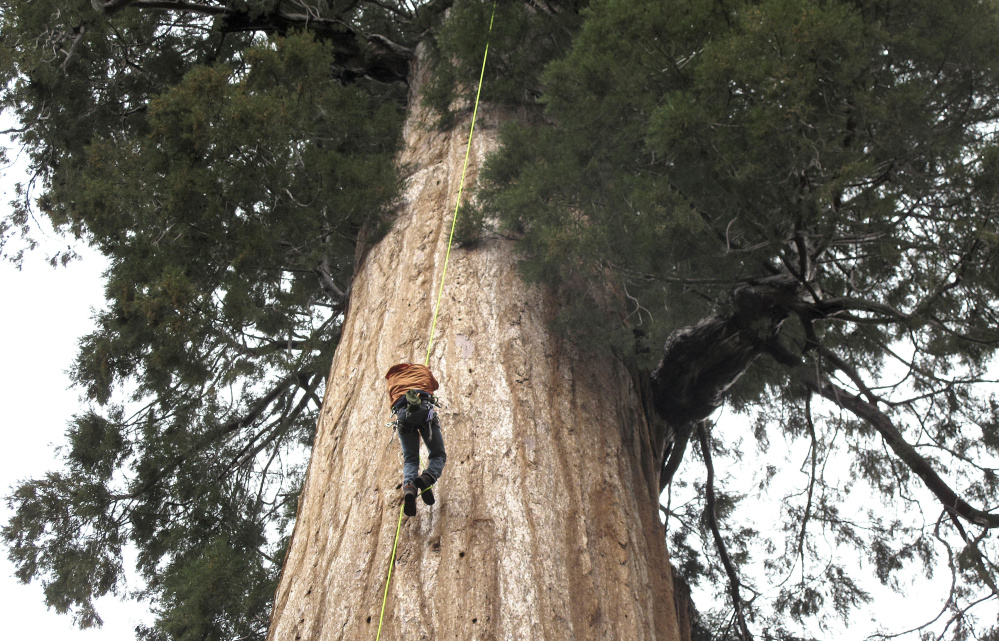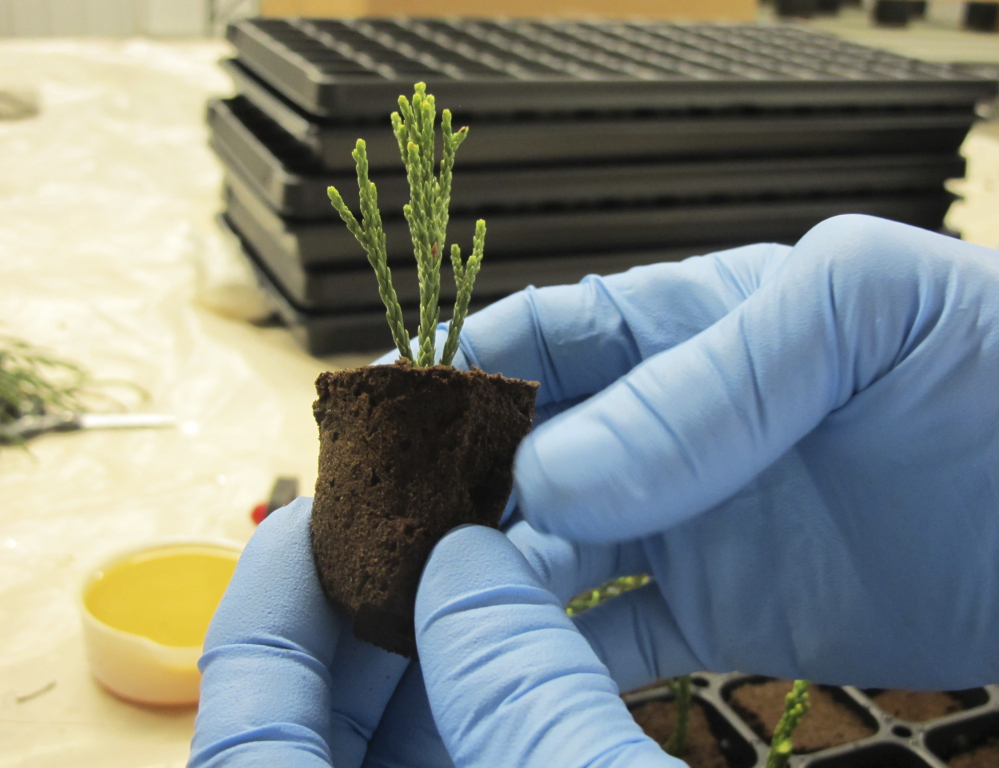CAMP NELSON, Calif. — At the foot of a giant sequoia in California’s Sierra Nevada, two arborists stepped into harnesses then inched up ropes more than 20 stories into the dizzying canopy of a tree that survived thousands of years, enduring drought, wildfire and disease.
There, the arborists clipped off tips of young branches to be hand-delivered across the country, cloned in a lab and then planted in a forest in some other part of the world.
The two are among a cadre of modern-day Johnny Appleseeds who believe California’s giant sequoias and coastal redwoods are blessed with some of the heartiest genetics of any trees on Earth – and that propagating them will help reverse climate change.
“It’s a biological miracle,” said tree climber Jim Clark. “This piece of tissue … can be rooted, and we have a miniature 3,000-year-old tree.”
The cloning trip to Camp Nelson was led by David Milarch, co-founder of Archangel Ancient Tree Archive.
The Michigan-based nurseryman preaches the urgency of restoring decimated forests. He says his nonprofit has cloned 170 types of trees and planted more than 300,000 of them in seven countries.
“It’s really a race against time,” Milarch said. “If we start right now, we can go after climate change and reverse it before it’s too late.”
Sequoias in the Sierra are among Earth’s biggest and oldest trees, some nearly 300 feet tall and 3,000 years old.
Relying on common sense that he says is being borne out by science, Milarch, 66, believes their size and robustness make them ideal for absorbing greenhouse gases that drive climate change on the planet. He likens them to people who drink and smoke all their lives, yet thrive well into their 90s.
One skeptic is Todd Dawson, a professor at the University of California, Berkeley. He admires Archangel’s creative efforts but says chances are slim that cloning and planting a limited number of trees will cool the warming planet.
“You’re going to have to plant a lot of trees to combat global warming,” Dawson said.
A team of about a dozen expert tree climbers from across the country volunteered for the expedition in May to restock Archangel’s store of genetic samples. They risked their lives to climb to the ends of massive limbs, starting in the southern Sierra sequoia grove and winding up in Northern California, where they collected additional samples from coastal redwoods .
Clark wrapped the clippings he gathered in damp newspaper, placed them inside ice-filled duffel bags and boarded an overnight flight to the Archangel’s lab across country in Copemish, Michigan.
There, Clark and another specialist snipped off some 2,000 shoots a few inches long and planted them in small containers to grow beneath fluorescent lights. Cloning ancient trees is tricky business, lab workers say, and many samples don’t survive.
Later this year, Archangel’s team will plant up to 1,000 saplings in Oregon.
As Bill Werner, a horticulture consultant who’s worked with Archangel, says, “It may be a drop in the bucket, but at least somebody’s doing something.”
Send questions/comments to the editors.




Success. Please wait for the page to reload. If the page does not reload within 5 seconds, please refresh the page.
Enter your email and password to access comments.
Hi, to comment on stories you must . This profile is in addition to your subscription and website login.
Already have a commenting profile? .
Invalid username/password.
Please check your email to confirm and complete your registration.
Only subscribers are eligible to post comments. Please subscribe or login first for digital access. Here’s why.
Use the form below to reset your password. When you've submitted your account email, we will send an email with a reset code.